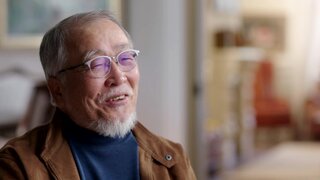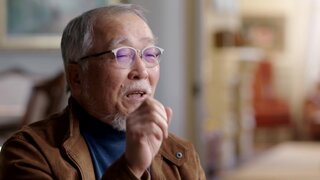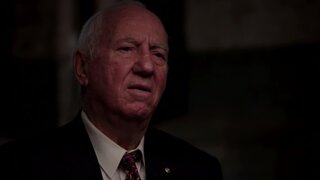Create a free profile to get unlimited access to exclusive videos, breaking news, sweepstakes, and more!
Historic NYC Building Becomes Murder Scene For Artist On Verge Of A Career Breakthrough
The family of Theresa Hak Kyung Cha, a murdered artist on the cusp of a career breakthrough, soon found evidence that New York police missed.
In the early 1980s, Manhattan’s vibrant art scene was getting as much attention as its gritty crime issues. Those two worlds tragically collided for 31-year-old Theresa Hak Kyung Cha, who’d moved to the city from San Francisco and was steadily making a name for herself as an artist and author.
On November 5, 1982, Cha’s body was discovered around 7:15 p.m. in a parking lot on Elizabeth Street in Soho. Court records noted she had multiple lacerations to the back of her head and that her pants and underwear were around her knees.
It appeared that Cha had been strangled and her body had been dumped in the lot, investigators told “New York Homicide,” airing Saturdays at 9/8c on Oxygen.
Cha’s husband, Richard Barnes, a photographer who was documenting the renovation of the historic Puck Building, went to the police station to report his wife missing at 3:15 a.m. She had failed to show up for a Friday night dinner date. Barnes faced the grim task of identifying his wife’s body.
Detectives pieced together Cha’s final hours with help from Barnes. He’d last seen her at home in the morning when she left for work at the Metropolitan Museum on the Upper East Side.
She was wearing a beret, gloves, and a leather coat, and was carrying a red bag from the Met. Cha’s hat and gloves were not in the lot where her body was found.
Detectives determined that Cha left work at the museum around 3 p.m. and made her way to the Artists Space in Soho, where she was having an upcoming show. A photographer told investigators that Cha left the gallery shortly before sunset around 4:30 p.m.
“He said he was supposed to meet his wife at the Puck Building right around 5 o’clock,” Paul Pace, a retired detective with NYPD 5th Precinct Manhattan, told producers. “He went there and they must have missed each other.”
Barnes said he went home and called friends about his wife. No one had any information and Barnes figured that something had come up, so he went out for drinks with friends.
As is standard procedure in a homicide case, detectives looked into Cha’s marriage.They found that she and Barnes had ups and downs and financial strains. They also discovered that Cha had just published her first book, “Dictee,” about six women, including herself, that promised to jumpstart her career.
But police found no scratches or wounds on Barnes that would have resulted from a struggle during the murder, and he was soon ruled out as a suspect.
Investigators also focused their attention on Cha’s missing wedding ring, a custom piece with a silver band and a black stone between two red ones. Barnes’ ring was almost identical but with one red stone flanked by black ones. A search for the ring in pawn shops led to a dead end.
Authorities thought Cha most likely hadn’t been killed in the parking lot but tossed there. She was supposed to meet her husband at the Puck Building at the corner of Lafayette and Houston in Nolita. Was she killed there?
“In the fall of 1982, the huge building was being renovated and the interior was a maze of half-finished rooms and construction zones,” explained Robert K. Boyce, former NYPD chief of detectives.
Teams were formed including K-9 units, to search the building, but they didn’t find the murder site.
When employees of the Puck Building were asked to share leads, a plumber who lived in Brooklyn came forward. He named Joey Sanza, his live-in brother-in-law. The workman told detectives that Sanza had behaved strangely on Friday night and that he was wearing an unusual ring. He added that Sanza stole some money and jewelry.
Sanza worked as a security guard at the Puck Building. He’d punched out of work at 5 p.m. on November 5, the same time Cha was set to arrive there. Detectives also learned that Sanza had access to a work van the evening of the murder. Another witness came forward and said she’d seen Sanza carrying a red Metropolitan Museum bag.
Subsequently, Sanza had gone missing.
Homicide investigators faced two big hurdles: locating Sanza and finding physical evidence directly connecting him to Cha’s murder. But in a shocking twist, Cha’s family came through with key pieces of the puzzle.
“My father, James, and I went to the basement of the Puck Building looking for the crime scene because the police didn't find a crime scene for a month,” John Cha, the victim’s brother, told “New York Homicide.”
The men conducted their own search. Against all odds, they found Cha’s missing hat, which was caked with dried blood, her gloves, and a boot.
“This was a unique case,” investigators said. “It is odd that they were the ones that found it.”
Meanwhile, detectives continued to search for Sanza and to learn more about him. Through the National Crime Information Center they discovered Sanza had a history of alleged sexual assaults in Florida.
Six months after Cha’s murder, Sanza was arrested for sexual battery in Pompano Beach, Florida. NYC detectives traveled south to interview Sanza. During the questioning they presented him with a photo of Cha’s wedding ring.
“He looked at the ring and his eyes just popped open as if to say, ‘Where did you get that?’” said Pace. Sanza’s lawyer shut down the interrogation.
As detectives and prosecutors worked to build a case against Sanza in New York, he confessed to “a dozen counts of sexual assault” in Florida and was sentenced to life in prison, reported the South Florida Sun Sentinel.
“In each of those three rapes in South Florida Joey Sanza had taken a ring either from the finger or from a jewelry box of those victims,” said Jeff Schlanger, former ADA in Manhattan D.A.’s Office. That pattern bolstered their certainty that Sanza was their man in the Cha murder.
Because evidence against Sanza was all circumstantial, convincing a jury of that was still a challenge. Even testimony from Sanza’s rape victims in Florida proved to be problematic. Women had testified that Sanza had been polite during their assaults. That earned him the nickname: the “gentle rapist.”
“That became somewhat problematic,” said Schlanger.
Sanza’s first two trials ended in mistrials. In the third court proceeding, Sanza’s girlfriend testified against him. She told that court that Sanza had told her around the time of Cha’s murder that he admitted to killing someone.
Sanza was convicted of second-degree murder and rape. He was sentenced to 25 years to life. He’ll serve that sentence when his stint behind bars in Florida concludes.
For more on this case and others like it, watch “New York Homicide,”airing Saturdays at 9/8c on Oxygen or stream episodes here.























